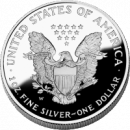Coin Flips
 Have you ever wondered, when you flip a coin,
whether a coin falls more often on the head or the tail? How often would
you have to flip the coin to achieve a probability of 50 percent (both
sides fall equally often)?
Have you ever wondered, when you flip a coin,
whether a coin falls more often on the head or the tail? How often would
you have to flip the coin to achieve a probability of 50 percent (both
sides fall equally often)?
Probability theory says it should be even but the experiment shows it rarely comes out even. This should lead into a discussion of what is the value of the theory, perhaps other than benefitting a casino?
Well, here is the program to help you out. Load the program and enter
COINFLIPS and the number of times, preferably not more often than 700
times. The program prints each flip and summarizes the result at the
end.
COINFLIPS.lgo
TO MAIN
CLEARTEXT
PR [ENTER COINFLIPS FOLLOWED BY THE DESIRED NUMBER BUT NOT MORE THAN MAX OF 700]
END
TO COINFLIPS :NUM
IF :NUM > 700 THEN PR [DO NOT USE A NUMBER GREATER THAN 700.] STOP
IF :NUM < 1 THEN PR [USE A NUMBER GREATER THAN 0.] STOP
PR (SE [TOSSING A COIN] :NUM [TIMES. PLEASE WAIT...])
PR []
MANY.FLIPS :NUM 0 0
END
TO MANY.FLIPS :NUM :HEADS :TAILS
IF :NUM = 0 THEN PR [] PR (SE [HEADS =] :HEADS [.....] [TAILS =] :TAILS) STOP
IF FLIP = "HEADS THEN PRINT "H MANY.FLIPS :NUM - 1 :HEADS + 1 :TAILS ELSE PRINT "T MANY.FLIPS :NUM - 1 :HEADS :TAILS + 1
END
TO FLIP
OUTPUT PICK.ONE [HEADS TAILS]
END
TO PICK.ONE :OBJECT
; ----------------------------------
; picks one item from a word or list
; ----------------------------------
OUTPUT ITEM (RANDOM COUNT :OBJECT) :OBJECT
END
TO REM :COMMENTS
END
MAIN
| Procedure | MAIN, COINFLIPS |
| Description | Flip a coin to see how often heads or tails will fall. |
| Level | Beginner |
| Tags | Math, Random |
